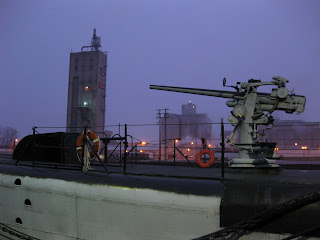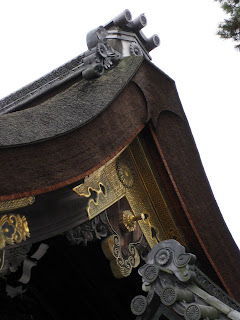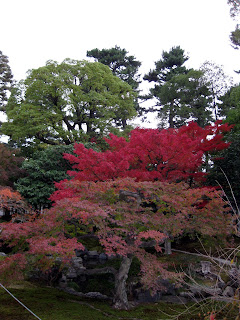I left Japan a little more than a week ago and now I am writing from a friend's apartment in Brooklyn, New York. So many places I have visited the last few days! It started with a cheap JetStar flight from Kansai Airport, via Gold Coast, Australia to Auckland. It was a bit nostalgic to visit the "city of sails" again. On my second day in New Zealand I rented a car and drove up to Whangarei. I made a little detour to look at the Kauri Museum and the Waipoua Kauri Forest, so instead of three hours the trip took all day and I arrived really late. I stayed two nights on Søren Larsen. Interesting feeling to be back and see the ship where I left her. I was back in my work clothes, taking down awnings, fastening deck equipment and building an outboard engine bracket. Was Malaysia and Japan just a dream? Did I ever leave Whangarei and New Zealand?

Log from the Kauri Museum in Matakohe. This was my first stop on the second day in New Zealand, a couple of hours from Auckland. Today very little is left of the great kauri forests that once covered large areas of New Zealand. Look at the size of that chain saw blade!

Kauri was not only appreciated for its timber, but also for the kauri gum, which is a bit similar to amber. Big lumps, lots of them!

The planks obtained can be quite big. Such as the one used for the table here. Kauri was one of the preferred woods for Maori carvings and canoe building.

I continued north from the museum in my little rental car.

The scenery of the Northland district is just amazing. As sceneries usually are in New Zealand.

I forgot the name of the funny looking, very symmetrical pine trees they have here. But I love them.

West coast sea view.

The weather was dramatic on this day.

Guess the main wind direction...

Finally I arrived in the Waipoua Kauri forest. A decked pathway led into the jungle-like vegetation.
First I went to see the biggest Kauri tree still alive, the Tane Mahuta or Lord of the Forest. The path made a sharp turn and the first thing I saw was a sign, starting with the words "You are in the presence of one of the most ancient of trees..." I looked up and there it was. Awe.

This is Te Matua Ngahere, with the largest trunk diameter of any living Kauri tree. (The largest kauri trunk ever recorded was actually twice as thick.)

"Three Sisters", three large-medium sized Kauri trees standing close together. Notice the size of the man down to the left in the picture.

Me in front of a kauri tree.

It was already getting dark when I left Waipoua. I arrived in Whangarei maybe an hour before midnight. My first stop was our old spar shed right inside the main gates of NZ Yachts. Cubie and Jarren were here, burning the midnight oil on their new project which they bought a while ago.

Søren Larsen was looking really good in the lovely spring weather.

The new deckhouse is very similar to the one that was demolished by the wave. Only newer.

She was scheduled to sail the following Monday so there were jobs going on everywhere.

Even Jarren was working.

A lot of new names onboard.

The local seagulls didn't seem to worry much about the chaos.

We had a BBQ on Saturday evening.

Spirit of New Zealand was up the slip not too far from us.

And a couple of crew from Spirit of New Zealand joined the party. Here their captain is talking to Steve, the owner of Søren Larsen.

Gathered in front of a campfire on the "beach" after the BBQ, just like the night before I left the ship in March.

And we burned the old deck of the Talisman, Jarren and Cubie's boat.
I left New Zealand on Sunday evening and I arrived in Los Angeles in the morning of the same day. Finally I got that day back, which I lost when I crossed the date line westbound a year ago!

















































